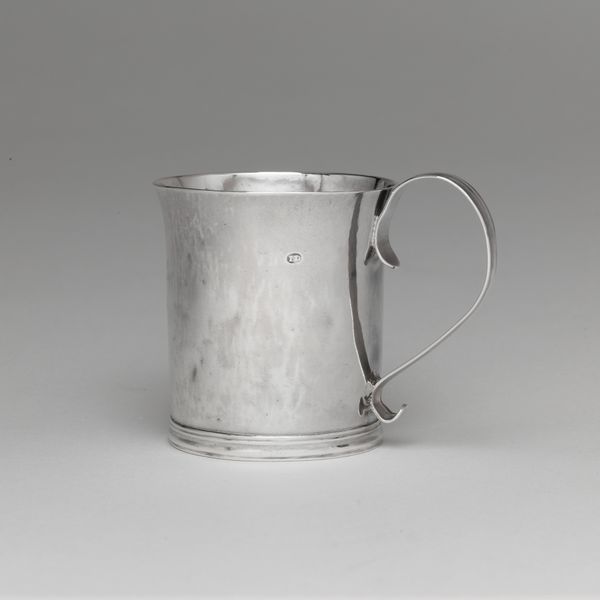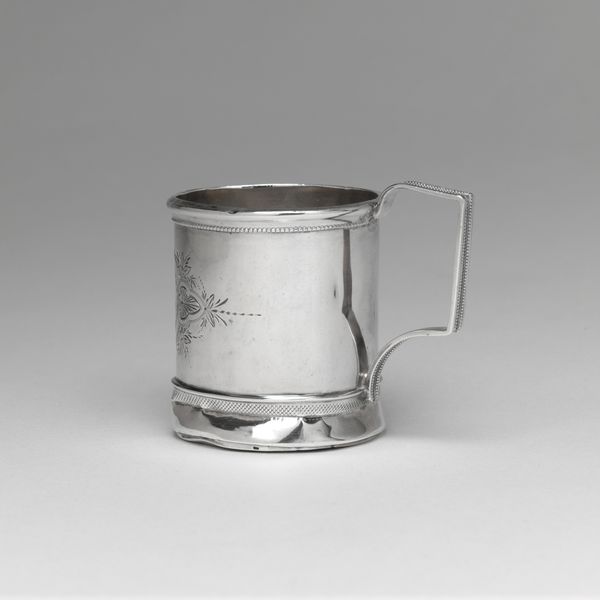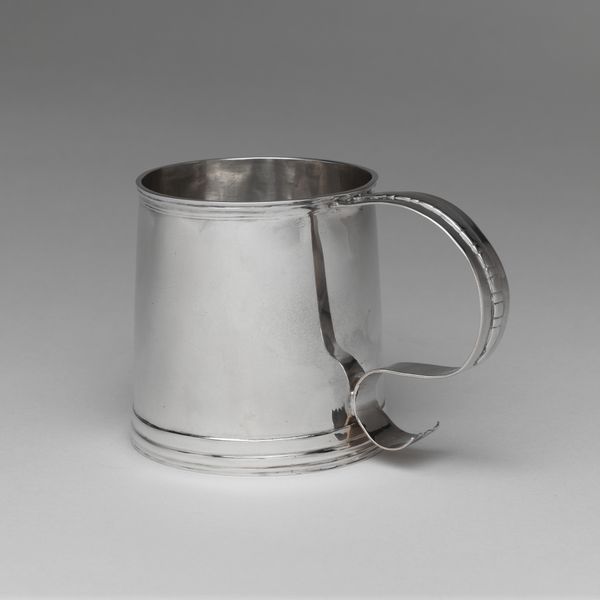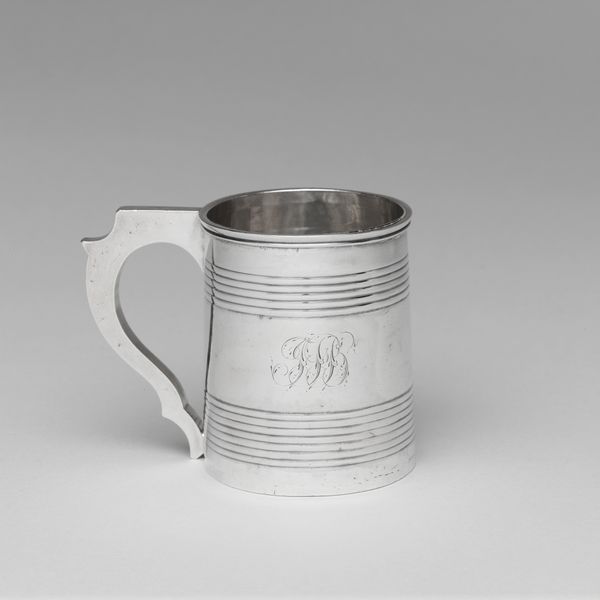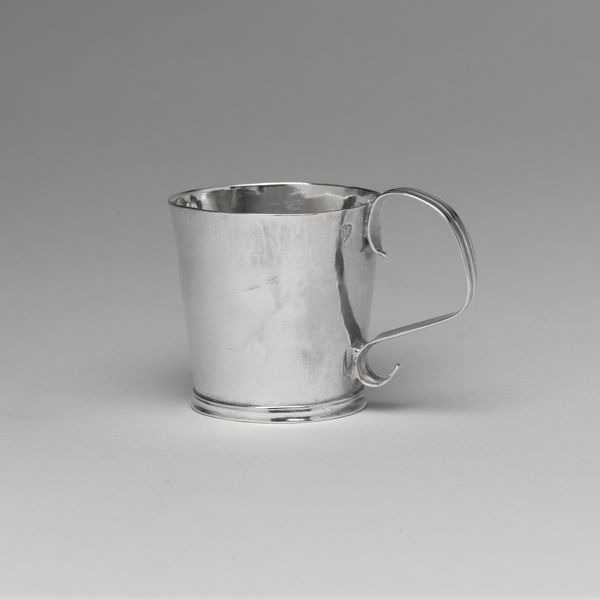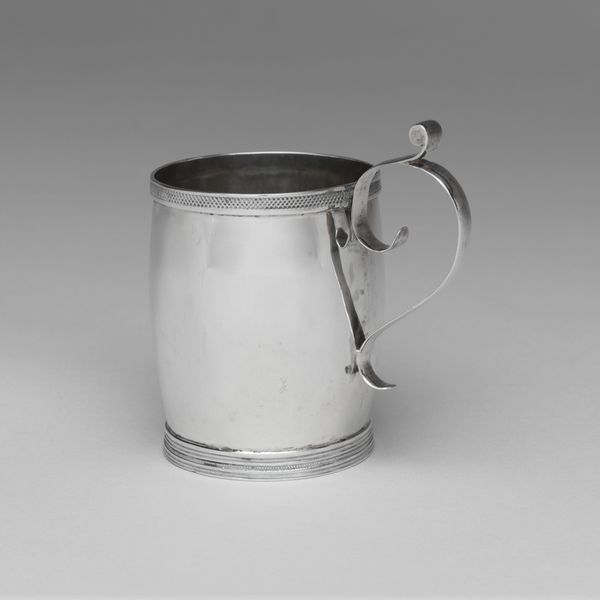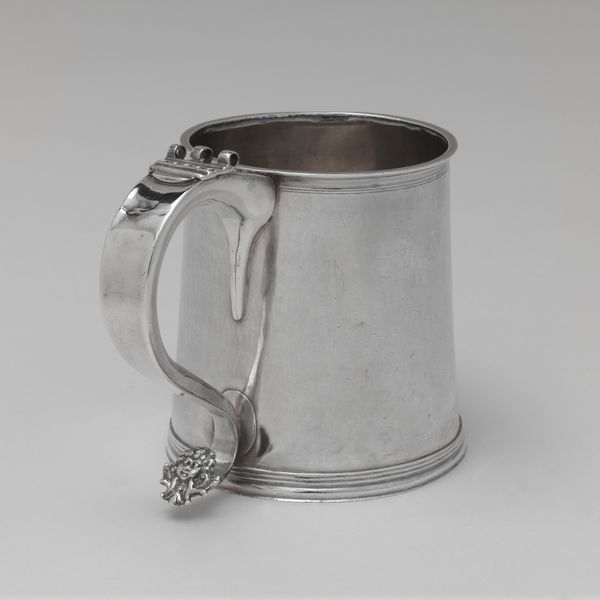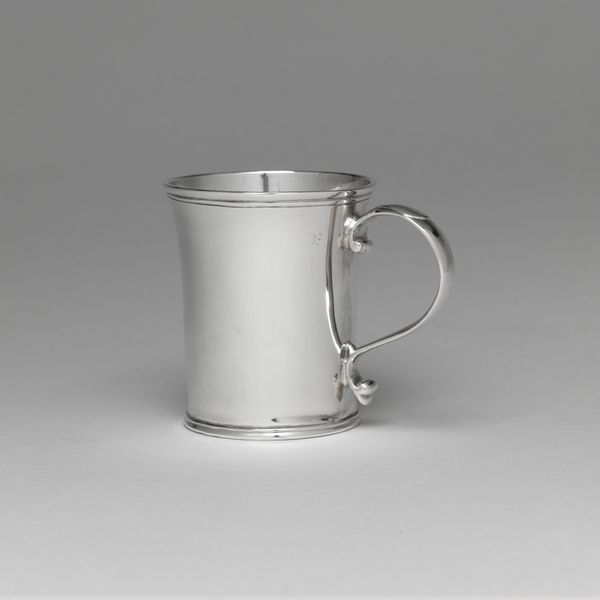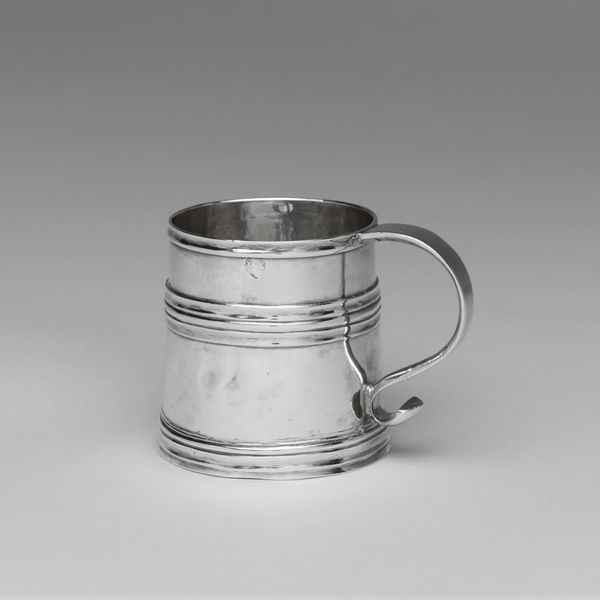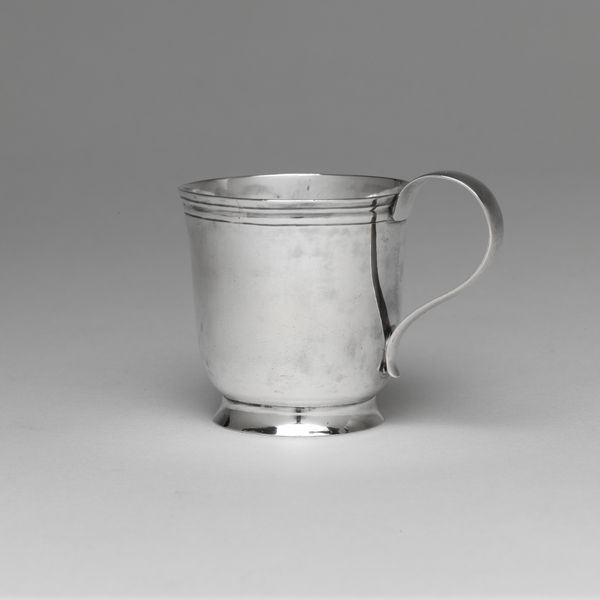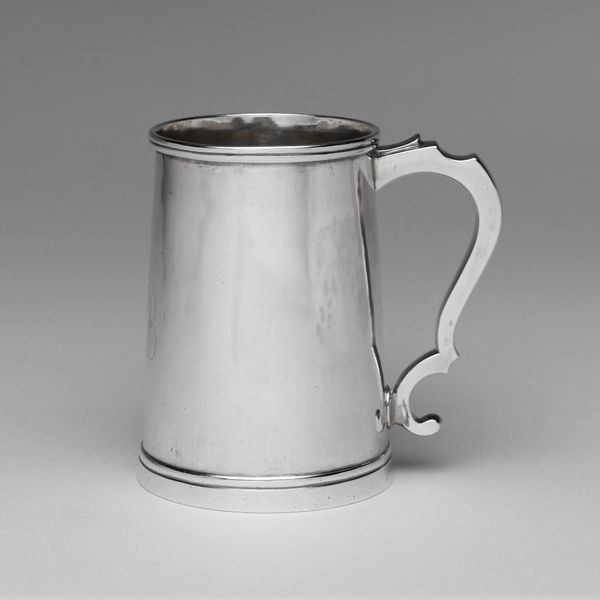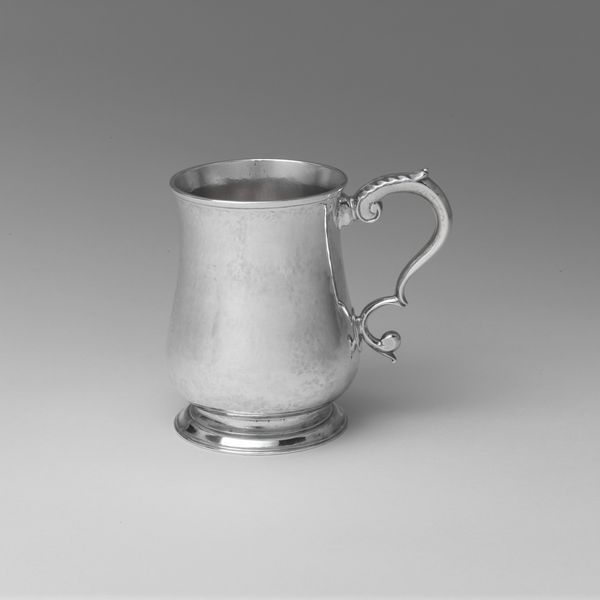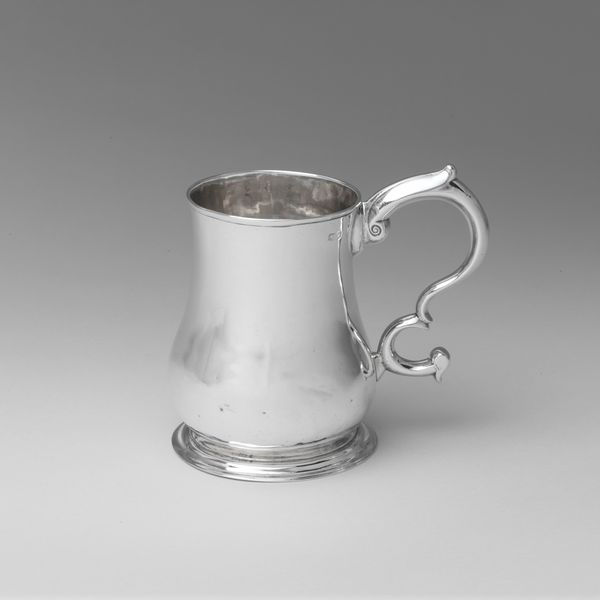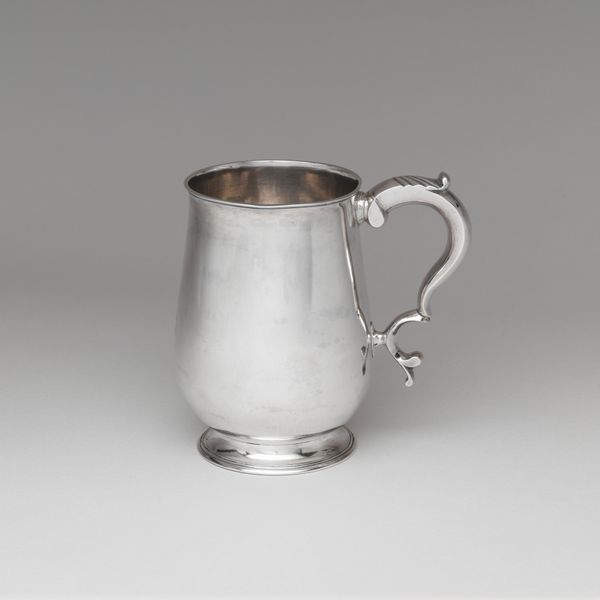
silver, metal, ceramic
#
silver
#
metal
#
ceramic
#
15_18th-century
#
history-painting
#
decorative-art
Dimensions: Overall: 4 x 4 9/16 in. (10.2 x 11.6 cm); 9 oz. 12 dwt. (297.9 g) Lip: Diam. 2 15/16 in. (7.5 cm) Foot: Diam. 3 1/4 in. (8.3 cm)
Copyright: Public Domain
Curator: Before us we have a silver mug, created sometime between 1735 and 1750, and attributed to Jacob Ten Eyck. Its current home is here at the Metropolitan Museum of Art. Editor: Well, it's remarkably…reflective. The smooth, polished surface really catches the light. And the handle; it has such a sinuous, almost playful form that contradicts its sturdy cylindrical shape. Curator: Precisely. Let's think about what this object might have signified to someone in the 18th century. The craftsmanship of the piece implies a certain level of affluence and status. Imagine the world this mug inhabited—one where the consumption of beverages was often a social act, laden with cultural meaning and performed within rigid social hierarchies. Editor: Note also the delicate engraving of floral motifs. See how these arabesques subtly animate the plain, metallic body? Curator: Indeed. The use of silver wasn't merely about aesthetics. It spoke to a burgeoning colonial economy and its deep ties to global trade. Every sip taken from this mug would have been connected to labor, land, and power structures stretching across continents. It's crucial we ask whose labor produced the materials, and whose hands profited from its ownership? Editor: Yet there is also, despite these serious points, a formal delight in the balance of volumes: the robust, round body is offset beautifully by that slender, serpentine handle. The eye travels constantly across the gleaming metal. Curator: And for whom was this crafted, I wonder? What social rituals surrounded it? These details whisper stories of identity and belonging. Objects such as this acted as silent witnesses to complex social and political dialogues. It provokes so many urgent questions about the complex power dynamics of the time. Editor: Ultimately, the interplay of the polished surface and flowing form captures a singular moment in material culture. This singular moment offers an enduring testament to our visual capacity for balance, depth, and graceful design. Curator: Absolutely. It truly invites us to look at history not just as a sequence of events, but as a network of interconnected stories embedded within everyday objects. Editor: I leave with a renewed appreciation for silver’s allure, especially when molded and tooled with such exquisite artistry.
Comments
No comments
Be the first to comment and join the conversation on the ultimate creative platform.
